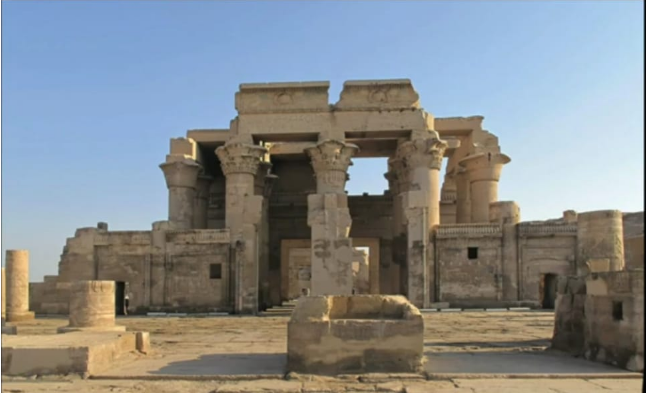Temple of Kom Ombo
The city of Kom Ombo is located on the eastern bank of the Nile River. The word “Kom” means “hill,” and “Ombo” means “gold,” which means the “land of gold.” This city worshiped two main gods: Sobek, the crocodile-headed god, and Horus, the falcon-headed god. Therefore, we find for the first time a temple divided between two triads: the triad of Horus and the triad of Sobek in one place.
History of the City of Kom Ombo
In prehistoric times, there was a small village near Kom Ombo called “Sabil.” A skeleton of a person who was stabbed in the back was found there, and it was dated as the oldest murder in history. In the civilization of Sabil, the people of the village invented stone tools made of stone or ivory, and they were distinguished by their small size and were used as scalpels or small knives. Due to a bend in the river, which caused the silt to be thrown towards the western side, as a result, a small island was formed, which is located directly in front of the Kom Ombo temple. This helped in reducing the speed of the water current, making it a suitable area to attract crocodiles that lived there, which made them worship the crocodile as a main god.
Construction of the Temple
The myths inscribed on the temple say that Sobek and Horus fought over the ownership of the city, and after a long struggle, the gods ruled to divide the city equally between them. This decision issued by the god Ra was recorded on the walls of the temple. But Sobek did not accept this ruling, so he seized the part belonging to Horus and then the city, declaring that he was the main owner of the city without a partner. This led to the departure of Horus and his followers, and the city became empty of inhabitants. So the god Sobek, in his capacity as the god of the afterlife, summoned the spirits of the dead to cultivate the land. Instead of throwing seeds, they threw sand, so the whole city was covered with sand, and poverty struck the city. A large fire also occurred in the city, leading to its destruction. This made the gods reconcile between Horus and Sobek and return Horus and his followers to the city. They started farming, and the inhabitants returned to the city. After rebuilding it, the beautiful temple was built. The construction of the temple took about 385 years. It was built in the reign of Ptolemy VI Philometor, but its decoration was not completed until the Roman era in the reign of Emperor Tiberius.
Facade of the Temple of Kom Ombo divided into two halves for Horus and Sobek
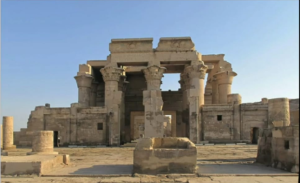
Features of the Temple of Kom Ombo
It is divided into two halves for each of the gods. The first triad is Sobek (Sobek the husband, Hathor the wife, and Khonsu-Hor the son). The second triad is Horus (Horus the husband, Ta-Snet-Nefert the wife, and Horus-Sematawy the son). The eastern part was dedicated to the god Sobek, while the western part was dedicated to the god Horus. It is also considered the only temple from the Ptolemaic era that is distinguished by the presence of an inscription of the calendar. It also contains a wonderful panel that distinguishes it from other museums, and it is a panel of surgical instruments.
ancient Egyptian calendar (the calendar in Kom Ombo)

a panel of surgical instruments
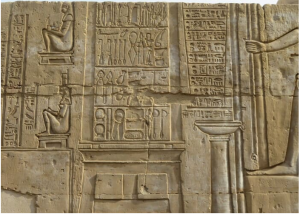
Temple designing
It is a rectangular limestone building. It begins with an outer gate from the era of Ptolemy XII (the flute player, Cleopatra’s father). Then there is a front courtyard, followed by the facade of the temple, which is divided into two halves, each as follows: an outer facade, then a hall of large columns, then a hall of small columns, then a hall preceding the Holy of Holies, then the Holy of Holies, and surrounding the Holy of Holies is a group of chambers numbering 7 chambers. In addition to the outer corridor that surrounded the temple, on its left, we find the Nile meter, followed by a small sacred lake. From inside the corridor, we reach the most important thing in the temple, which is the panel of medical instruments. It begins with a front courtyard, a front columned hall, an inner hall, and 3 inner halls that end in two halls of the Holy of Holies, and on either side of them are 7 small chambers. There are also stone steps leading to the roof and the upper floor.
The Outer Gate
It is a large stone building built by King Ptolemy XII. The western half of the gate is destroyed as a result of an earthquake, and only the eastern half remains. The inscriptions show us a scene of the king suppressing enemies and offering sacrifices to the god Sobek, holding a scepter and the ankh sign, and behind him stands the goddess Hathor. On the other side of the gate, the king is shown offering sacrifices to the god Horus, and behind him is his wife, Ta-Snet-Nefert. And another scene of Ptolemy XII offering two mirrors to the goddess Hathor as a kind of offering.
A picture of the outer gate of the temple from the era of Ptolemy XII
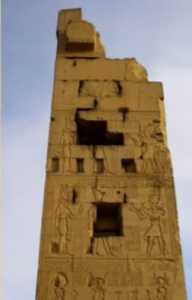
Picture taken in front of the temple after the outer gate, showing the pylon and columned halls
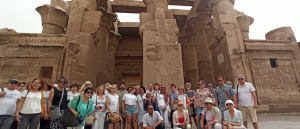
The Pylon
Located directly after the gate, it is greatly dilapidated, and only a small part of it remains dating back to the era of Emperor Domitian. The scenes on it depict the king with texts praising the god Sobek and the god Horus.
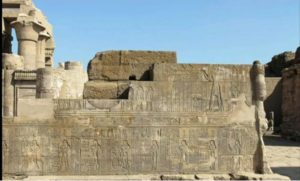
Pictures for The Pylon
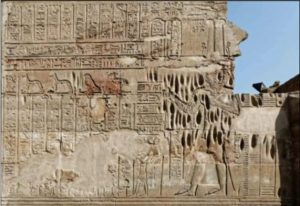
The Open Courtyard
It is a large rectangular courtyard containing 16 columns surrounding the courtyard from 3 sides. The inner columns have scenes of the king offering sacrifices with different crowns, and most of the hieroglyphs bear the name of Emperor Tiberius. In the middle of the courtyard, there is an altar for offering sacrifices to the god Sobek and Horus, and behind him is his wife Hathor, and other inscriptions of Emperor Tiberius wearing the red and white crowns of the god Horus, holding the scepter and the ankh sign, and behind him stands the goddess Nephthys. On the right and left of the courtyard, the scenes are repeated with only the god differing. On the right, there is a scene of the purification of the emperor in the presence of Sobek with a crocodile head, and another scene of the king leaving the palace with the priest in front of him burning incense. On the left, the same scene with the difference of the
presence of Horus this time with a falcon head and Thoth in the form of an ibis bird.
Image on one of the columns with an inscription of the Roman Emperor Tiberius in pharaonic dress offering sacrifices to the Egyptian god
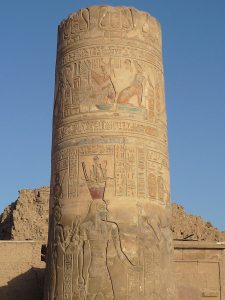
Columns’ capitals of the Temple of Kom Ombo
The capitals of the columns in the temple are distinguished by their varied decorations, which were widely used in the Ptolemaic era and mix between Egyptian and Ptolemaic thought. For example, Hathor capitals, palm capitals, lotus capitals, and papyrus capitals, all of which are intimate Egyptian column capitals. And the most widespread capitals in the Ptolemaic era are the composite column capitals, which are very similar to the Corinthian column capitals.
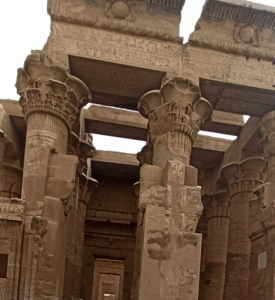
The Front Columned Hall
It consists of 10 columns in two parallel rows. The ceiling has the shape of a winged cobra, and on the eastern side of this hall, we find wall curtains that rise to the middle of the column body. On the left, we find King Ptolemy XII being blessed by four gods: Thoth, Nut, Isis with the head of a lioness, and Horus. On the right, we find a door with the four winds depicted in the form of 4 mythical animals and were depicted in the form of a scarab with a ram’s head, where the scene depicts King Ptolemy XII offering sacrifices to the four gods.
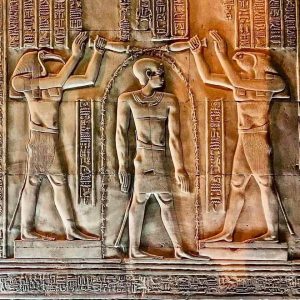
Image showing the inscriptions on the wall curtains and the god Thoth and the god Horus performing a purification process for King Ptolemy XII (where each god carries a purification vessel containing the symbol of the ankh, the symbol of life, and the Was sign, the symbol of power, which, when poured, creates a protective barrier around the pharaoh to protect him)
The Inner Columned Hall
It has the same design as the outer hall but is smaller in size, with 10 columns in two parallel rows, their capitals in the shape of a papyrus flower. The columns of this hall depict King Ptolemy VIII and his wives Cleopatra II and III standing offering sacrifices to the god. Also, a scene of the coronation of the king in front of Nekhbet (the goddess of the south in the form of a vulture) and Wadjet (in the form of a cobra) with the double crown.
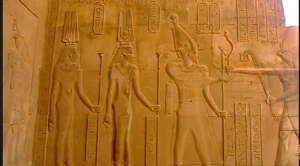 A picture showing Ptolemy VIII and his wives, Cleopatra II and III, before the god Horus
A picture showing Ptolemy VIII and his wives, Cleopatra II and III, before the god Horus
The Festival Hall
It has inscriptions of King Ptolemy VI throwing sand in front of the god Horus and another scene of the king purifying the corridors of the temple using natron salt.
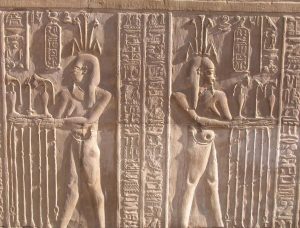
Image showing the inscriptions on the walls of the Kom Ombo temple and the god Hapi offering sacrifices and goodness, and the cartouche of King Ptolemy VI Philometor appears
The Hall of Offerings
The most important scene in this hall is a scene of dividing the seasons of the year (calendar). The ancient Egyptian year was divided into 12 months and 3 seasons: Akhet: the flood, Peret: the cultivation, and Shomu: the harvest. The month consisted of 30 days divided into 3 weeks, each week with 10 days. Thus, they had twelve months with 360 days, so they found five days called the five festival days (the epagomenal days). The names of the five gods are: Osiris, Isis, Horus, Nephthys, and Seth. On the right, the date of the specific day appears, and on the left, the name of a festival of the gods appears, which is similar to the calendar of saints’ days or saints’ feasts in Christianity. The first number on the right at the top is number 27 until number 30 at the end of the month, accompanied by a hieroglyphic sign in the shape of an animal’s tail, as the tail of the animal is its end (pronounced “bah”), which is the word we still use today to mean the end, followed by the first day of the third month of the Akhet flood season.
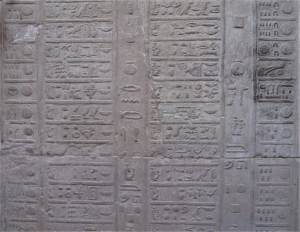
The calendar
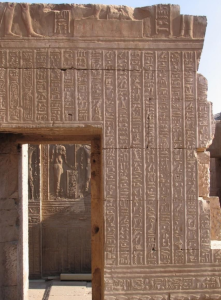
Image showing the method of building the temple walls, where the stone is placed in a dovetail system and sycamore wood is placed in the gaps and water is sprayed on the wood to expand, thus fixing the stones, and the empty part is called the bird’s tail
The Holy of Holies
These two halls are located at the far north and are two rectangular halls, and they are the oldest halls of the temple, dating back to the reign of King Ptolemy VI. The walls are damaged, and only the remains of a black granite base for the temple of the god Sobek remain. Behind it, there are a number of chambers for storing offerings for the temple of Kom Ombo and for the residence of the priests.
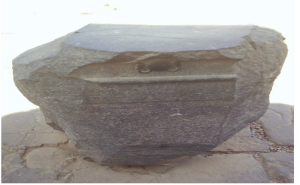
A picture of the remains of a black granite base belonging to the temple of the god Sobek
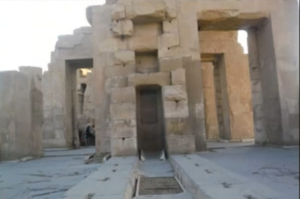
Holy of Holies from behind, and we see the walls damaged and the gaps between the stones show us the construction method
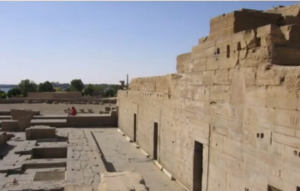
A picture of the chambers behind the Holy of Holies
The Outer and Inner Corridors
The temple is surrounded by two parallel corridors, one outer and the other inner. On the northwestern side of the wall, there is a famous panel known as the panel of the physician or surgical instruments. Behind the temple, we find a panel of the division of the temple dating back to the era of Trajan, from the top of the winged sun disk and a figure of God Shu sitting, and on the sides, the god Horus and the god Sobek. There is also a wonderful scene of prisoners and a figure of an emperor in the form of a lion attacking the enemies with bound hands.
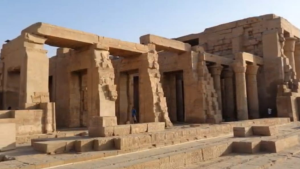
Picture of the outer corridor
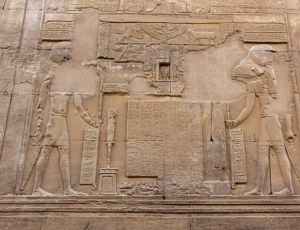
Temple dividing panel
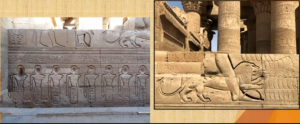
Panel representing the emperor in the form of a lion, with a group of enemies in front of him, as evidence of victory
The Medical Inscriptions
The inscriptions depict a collection of surgical tools known in ancient Egypt. They are carved on the outer part of the temple. The inscription shows the god Imhotep with surgical tools and various texts about medicine in ancient Egypt. Interestingly, the medical tools of that time are very similar to those used today. The inscription depicting the medical tools is one of the most intriguing features of the temple, as it shows a set of scalpels, forceps, speculums, scissors, medicine bottles, and various medical prescriptions. The inscriptions also show the goddesses Isis and Hathor, both seated on a birthing chair, as the ancient Egyptians used a birthing chair, not a bed, for childbirth, and this has been scientifically proven to be the best method of childbirth. Moreover, the ancient Egyptians also knew how to determine the sex of a fetus. When an Egyptian woman felt pregnant, she would bring three vessels, one containing wheat, another barley, and the third containing another plant. She would pour her urine into the three vessels. If the wheat grew, it indicated that she was carrying a female child. If the barley grew, it meant it was a male child. And if the third vessel did not grow, it meant she was not pregnant. In the scene, we see the Roman Emperor Trajan in front of the god Imhotep, who was the engineer of the Step Pyramid of Saqqara, the first Egyptian pyramid. Imhotep was also a famous priest and physician, which is why we find him deified as the god of medicine in this temple, and the Romans compared him to their god of medicine, Asclepius. Trajan is shown on his knees offering sacrifices to Imhotep, who is seated, with a set of vessels he uses in medicine and surgery in front of him, as well as sterilization tools. Isis is depicted seated to facilitate childbirth for women
Description of the Medical Tools
A tool was used to unclog the urinary tract. A tool called “md-mj” is a magical sign used for healing. We notice that the ancient Egyptians relied on two parts in medicine: science and magic. There were medical tools as well as magical amulets. A scalpel or knife for picking, two needles for suturing wounds, a spoon for removing unhealthy parts of the uterus, an iron for cauterizing injured parts of the body, a hand-held tool resembling a saw for amputating bones, a view of the birth signs MS. At the end of the scene, there are two tools used in catheterization or enemas, a hook-like tool placed under the skin to connect veins and arteries, tools used to widen the bile duct, an incense burner to fumigate the place to expel evil spirits, hooks or forceps to hold tools like cotton, a container for cotton or linen, containers for the solution used in the operation, a sharp knife for cutting the body, the “Wedjat” eye sign for blessing, a scale for weighing solutions in specific proportions to make compounds, cupping for treating the back and cartilage, two tools used in the mummification process to pierce the nose, two tools also used to unclog the urinary tract, scissors for amputating fingers and easily cut parts, and there was a sponge that was placed in the solution and then placed on the specific area to anesthetize it.
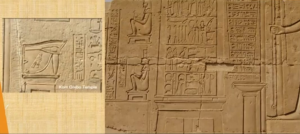
Image showing surgical tools on the right, and on its left, we find a scene of Isis giving birth to Horus while sitting on a chair, and to her left, we see the Eye of Horus to protect the child.
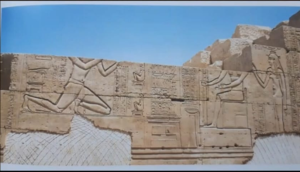
Emperor Trajan worshipping Imhotep (the god of medicine)
The Nile Meter
Located on the northwestern side is a round well containing steps that circle its lower wall. It dates back to the Roman era and is connected to a square basin with steps on three sides. This building was very important for determining water measurements in the Nile during flood times and thus determining taxes on agricultural lands attached to the temple. The tax system in Egypt was dependent on the flood. Each temple had its own lands that farmers would cultivate and deliver their produce to the priests in the temple, and the priests would give them a portion of it, whether livestock, grain, or poultry. The tax in Egypt was determined by the number of cubits of the flood, and hence the Nile meter was known. If the flood in a year was less than 6 cubits, they would store the grain for fear of drought and no taxes would be taken in that year. But if it exceeded 6 cubits, it would be a fertile year and taxes would be taken in it. And if it exceeded 12 cubits, the flood would drown the houses, and therefore a warning would be sent to the Delta.
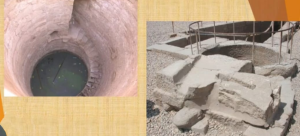
The Nile Meter
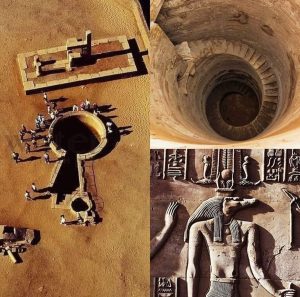
Pictures of the Nile meter from the top of the temple
The Crocodile Museum
Located next to the Temple of Kom Ombo, on the eastern bank of the Nile north of Aswan, the crocodile museum sheds light on the god Sobek, one of the gods of the city of Kom Ombo, which was opened in 2012. The main exhibition hall of the museum displays mummified Nile crocodiles. The largest is a crocodile 4.30 meters long, while the smallest is 2 meters long. In addition to a group of crocodile embryos and models of golden and ivory eyes and teeth of mummified crocodiles, the museum also contains statues of various sizes of the god Sobek, and a model of a tomb that mimics what was discovered in the Shatb necropolis, which shows burial methods and displays the earthenware coffins that contained the mummy of this sacred animal. The most important pieces displayed in the museum
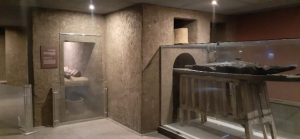
model of a crocodile burial tomb that was found in the Shatb area next to the museum
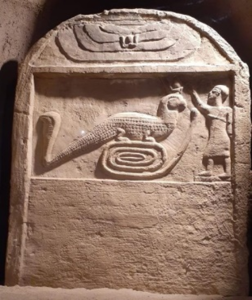
A limestone plaque depicting a scene of offering sacrifices to the deity Sobek
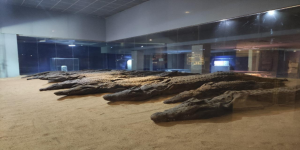
Image showing crocodiles of different sizes mummified and displayed in the crocodile museum next to the Temple of Kom Ombo

